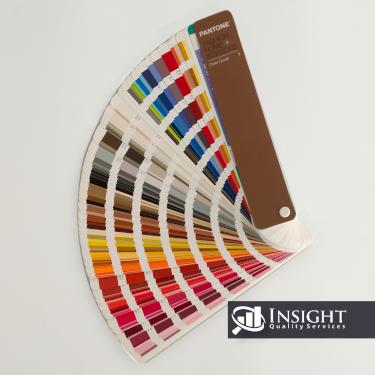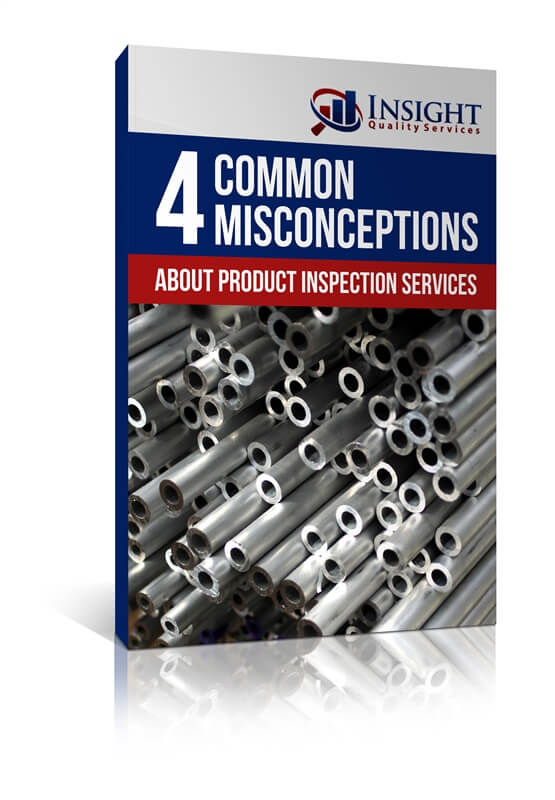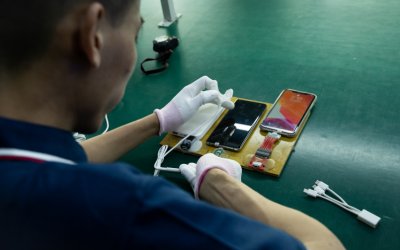A number of years ago, one of our customers, a big-box retailer, informed us of a problem they were having with one of their products.
As they were looking at the product on the shelf, they realized that some boxes had one shade of their brand’s signature color, while other boxes had a different shade.
Like most importers, they wanted to maintain a consistent brand image and they knew that something like this could reflect poorly on them.
The difference in color was attributed to the fact that they had two different suppliers, and those suppliers had printed the boxes slightly differently.
This is an issue that many importers face.
And sometimes, the issue can occur on items from one supplier, with differences between products that are from different production runs.
So, how do you ensure that the colors on your products and packaging stay consistent?
This is where the Pantone color system comes in.
What is the Pantone Color System?
The “Pantone Color System” is a system of color matching that is used in product design, printing, and manufacturing.

A Pantone book can be used as a color reference
It consists of two numbering systems, one for printing and packaging and one for fashion and product design.
The systems are designed to help you prevent color inconsistencies, and Pantone has organized nearly 5,000 colors into them.
They allow a product designer, for example, to provide a color number to the manufacturer.
This way they are on the same page about the exact color that needs to be used.
Graphic designers can also use the system to select specific colors, which printers can then use to ensure that printed materials match their intended look.
Colors can be specified as coated, uncoated, or matte.
These systems are useful for consumer goods importers.
Why is This Color Matching System Important to an Importer?
When it comes to your product and packaging, consistency is key.
During the development of your product and into the manufacturing stage, it serves as a common language for discussing colors.
Pantone makes books and plastic chips which can be used as a reference for specific colors.
These are useful when you’re developing an approval sample in conjunction with your manufacturer.
Once you’ve specified the colors for your product, you can compare the colors in the books or on the chips to your sample.
Later, you can compare that sample to all future production runs to ensure consistency.
There are also some additional measures you can take.
Ensuring Color Consistency with Additional Quality Control Measures
One of the key ways to ensure consistency in your products is by regularly conducting pre-shipment inspections through a third party.

A light box simulates different color environments
One tool that can be very helpful during these inspections is a lightbox.
A lightbox simulates the lighting in different environments to see what your product will look like in normal daylight or under fluorescent lights, cool lights, etc.
This allows you to verify your product or package color in a controlled environment.
Pantone and many other companies produce them, and if a supplier has one at their facility, it can be used during inspections.
So be sure your third-party inspection company is aware, and consider including it in your inspection checklist.
If your supplier does not have a lightbox, suggest they invest in one for color verification.
Now let’s recap.
Pantone is the International Standard for Color Matching
When you tell a manufacturer you want red, specifying a Pantone color allows you to determine the exact shade of red you are looking for.
Pantone books and chips enable people on opposite sides of the globe to do color matching without having to send samples back and forth.
Remember that Pantone colors are important in quality control because they help you to develop a perfect approval sample.
Your approval sample can then be used during inspections to compare to production units.
Once you’ve established your colors with the manufacturer and are ready to start production, it is a good idea to conduct pre-shipment inspections.
For more information about inspections, we recommend the following white paper.
Recommended: 4 Common Misconceptions About Product Inspection Services
Sometimes we get clients that think we can fix all their manufacturing problems. And it’s true we do a lot to identify and prevent – ensuring future problems are kept to a bare minimum. But, quality service providers do not insert quality into your product.
In this white paper, you’ll learn how inspection services really work and how to get the most out of your relationship with an inspection company.





0 Comments